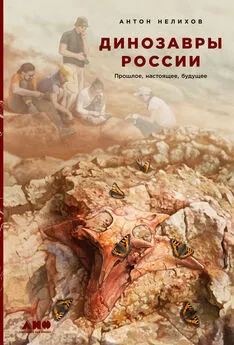Ник Пайенсон - Наблюдая за китами [Прошлое, настоящее и будущее загадочных гигантов]
- Название:Наблюдая за китами [Прошлое, настоящее и будущее загадочных гигантов]
- Автор:
- Жанр:
- Издательство:Альпина нон-фикшн
- Год:2020
- Город:Москва
- ISBN:978-5-0013-9249-1
- Рейтинг:
- Избранное:Добавить в избранное
-
Отзывы:
-
Ваша оценка:
Ник Пайенсон - Наблюдая за китами [Прошлое, настоящее и будущее загадочных гигантов] краткое содержание
Киты по-прежнему остаются загадочными созданиями. Мы знаем о них мало, слишком мало, но геологические масштабы их жизни и параметры их тел завораживают нас. К тому же они разговаривают друг с другом на непостижимых языках. У них, как и у нас, есть культура. Выдающийся знаток китов Ник Пайенсон отвечает на вопросы о том, откуда появились киты, как они живут сегодня и что произойдет с ними в эпоху людей — в новую эру, которую некоторые ученые называют антропоценом.
Наблюдая за китами [Прошлое, настоящее и будущее загадочных гигантов] - читать онлайн бесплатно ознакомительный отрывок
Интервал:
Закладка:
163
Waldon C. Winston, «The Largest Whale Ever Weighed», Natural History Magazine , 1950. Синий кит № 319.BF длиной 27,1 м, о котором пишет Уинстон, убитый 27 января 1948 г. японскими китобоями в Южном океане, является самым тяжелым среди достоверно измеренных синих китов. Отчет Уинстона чрезвычайно подробно описывает частичное взвешивание самки синего кита (27,1 м) с перечислением типов тканей (например, жира, костей, органов и т. д.). Окончательный результат Уинстона — 136,4 т — для этого экземпляра явно не включал поправку на потерю жидкости, которая может составлять от 6 до 10 процентов от массы тела (см.: Lockyer, 1976).
164
В советской научной литературе есть упоминания о том, что максимального веса достигали гренландские киты — до 150 т. См.: Успенский С. М. Живущие во льдах. — М.: Мысль, 1978. — С. 50. — Прим науч. ред.
165
Philip D. Gingerich, «Paleobiological Perspectives on Mesonychia, Archaeoceti, and the Origin of Whales», in The Emergence of Whales (Springer, 1998), pp. 423–49.
166
Nicholas D. Pyenson and Simon N. Sponberg, «Reconstructing Body Size in Extinct Crown Cetacea (Neoceti) Using Allometry, Phylogenetic Methods and Tests from the Fossil Record», Journal of Mammalian Evolution 18 (2011): 269–88.
167
Graham J. Slater et al., «Independent Evolution of Baleen Whale Gigantism Linked to Plio-Pleistocene Ocean Dynamics», Proceedings of the Royal Society B: Biological Sciences 284 (2017): 20170546.
168
Robert W. Boessenecker, «Pleistocene Survival of an Archaic Dwarf Baleen Whale ( Mysticeti: Cetotheriidae )», Naturwissenschaften 100 (2013): 365–71.
169
Gene Hunt and Kaustuv Roy, «Climate Change, Body Size Evolution, and Cope's Rule in Deep-sea Ostracodes», Proceedings of the National Academy of Sciences 103, no. 5 (2006): 1347–52; Daniel W. McShea, «Mechanisms of Large-Scale Evolutionary Trends», Evolution 48 (1994): 1747–63.
170
Alexander J. Werth, «Feeding in Marine Mammals», in Feeding: Form, Function and Evolution in Tetrapod Vertebrates (2000), pp. 475–514.
171
Alexander J. Werth, «How Do Mysticetes Remove Prey Trapped in Baleen?» Bulletin of the Museum of Comparative Zoology 156 (2001): 189–203; Alexander J. Werth and Jean Potvin, «Baleen Hydrodynamics and Morphology of Cross-Flow Filtration in Balaenid Whale Suspension Feeding», PLoS ONE 11 (2016): e0150106.
172
Thomas A. Deméré et al., «Morphological and Molecular Evidence for a Stepwise Evolutionary Transition from Teeth to Baleen in Mysticete Whales», Systematic Biology 57 (2008): 15–37.
173
В первом издании «Происхождения видов» Дарвин писал, что черный медведь, вылавливающий насекомых из воды, может служить примером для понимания эволюции усатых китов. В более поздних изданиях эту идею опустили, хотя к 1872 г. Дарвин указал на пластинки во рту утки, используемые в качестве фильтра при кормлении, в качестве еще одного полезного аналога усатых китов. См.: Carlos Peredo et al., «Decoupling Tooth Loss from the Evolution of Baleen in Whales», Frontiers in Marine Science 4 (2017): 67.
174
Richard O. Prum and Andrew H. Brush, «Which Came First, the Feather or the Bird?» Scientific American 288 (2003): 84–93.
175
Peredo et al., (2017). «Decoupling Tooth Loss…»
176
Дуглас Эмлонг был одним из самых активных коллекционеров, хотя под его именем вышла лишь одна публикация — с описанием животного, которое оказалось первым так называемым зубатым китом. См.: Douglas Emlong, «A New Archaic Cetacean from the Oligocene of Northwest Oregon», Bulletin of the Oregon University Museum of Natural History 3 (1966): 1–51; Clayton E. Ray, «Fossil Marine Mammals of Oregon», Systematic Zoology 25 (1976): 420–36. В последние десятилетия Джеймс Гедерт из штата Вашингтон и Кент Гибсон из Орегона также пожертвовали Смитсоновскому институту свои важные находки.
177
Philip A. Morin et al., «Genetic Structure of the Beaked Whale Genus Berardius in the North Pacific, with Genetic Evidence for a New Species», Marine Mammal Science 33 (2017): 96–111.
178
Nicholas D. Pyenson et al., «Mandible Allometry in Extant and Fossil Balaenopteridae (Cetacea: Mammalia): The Largest Vertebrate Skeletal Element and Its Role in Rorqual Lunge Feeding», Biological Journal of the Linnean Society 108 (2013): 586–99.
179
Tim D. White et al., Human Osteology (San Diego: Academic Press, 2011).
180
Эти строки из «Моби Дика» больше относятся к описанию глубины морского дна: Herman Melville, Moby Dick; or, The Whale (New York: Harper and Brothers, 1851). «Yet even then beyond the reach of any plummet — 'out of the belly of hell'— when the whale grounded upon the ocean's utmost bones, even then, God heard the engulphed, repenting prophet when he cried». В русском переводе выражение (the ocean's utmost bones) отсутствует. Соответствующий фрагмент 9-й главы переведен так: «Но и оттуда, из бездны, недоступной лоту, „из чрева преисподней“, когда уже кит погрузился на самое дно океана, — и оттуда услышал Бог голос раскаявшегося в пучине пророка» (перевод И. Бернштейн).
181
Graeme Eagles and Wilfried Jokat, «Tectonic reconstructions for paleobathymetry in Drake Passage», Tectonophysics 611 (2014): 28–50; Howie D. Scher et al., «Onset of Antarctic Circumpolar Current 30 Million Years Ago as Tasmanian Gateway Aligned with Westerlies», Nature 523 (2015): 580–83.
182
Литература о Шеклтоне и его экспедициях довольно обширна. Мне нравится относительно недавний пересказ Caroline Alexander, The Endurance: Shackleton's Legendary Antarctic Expedition (London: Bloomsbury, 1998). Хорошей отправной точкой являются книги: Ernest H. Shackleton, South: the Story of Shackleton's Last Expedition, 1914–1917 (New York: Macmillan, 1920); Alfred Lansing, Endurance: Shackleton's Incredible Voyage (New York: Carroll and Graf Publishers, 1959).
183
R. Headland, The Island of South Georgia (Cambridge: Cambridge University Press, 1984).
184
Johan Nicolay Tønnessen and Arne Odd Johnsen, The History of Modern Whaling (Berkeley: University of California Press, 1982).
185
Tønnessen and Johnsen, The History of Modern Whaling.
186
Robert C. Rocha Jr. et al., «Emptying the Oceans: A Summary of Industrial Whaling Catches in the 20th Century», Marine Fisheries Review 76 (2014): 37–48.
187
Frank Hurley, South with Endurance: Shackleton's Antarctic Expedition 1914–1917: The Photographs of Frank Hurley (New York: Simon & Schuster, 2001).
188
Trevor A. Branch et al., «Past and Present Distribution, Densities and Movements of Blue Whales Balaenoptera musculus in the Southern Hemisphere and Northern Indian Ocean», Mammal Review 37 (2007): 116–75.
189
Jennifer A. Jackson et al., «How Few Whales Were There After Whaling? Inference from Contemporary mtDNA Diversity», Molecular Ecology 17 (2008): 236–51.
190
D. Graham Burnett, The Sounding of the Whale: Science and Cetaceans in the Twentieth Century (Chicago: University of Chicago Press, 2012).
191
Alexey V. Yablokov, «Validity of Whaling Data», Nature 367 (1994): 108–108; Alfred A. Berzin, «The Truth About Soviet Whaling», Marine Fisheries Review 70, no. 2 (2008): 4–59; Yulia V. Ivashchenko and Phillip J. Clapham, «Too Much Is Never Enough: The Cautionary Tale of Soviet Illegal Whaling», Marine Fisheries Review 76 (2014): 1–22.
192
N. A. Mackintosh and J. F. G. Wheeler, «Southern Blue and Fin Whales», Discovery Reports 1 (1929): 257–540.
193
Burnett, Sounding of the Whale .
194
Stan Ulanski, The Billfish Story: Swordfish, Sailfish, Marlin, and Other Gladiators of the Sea (University of Georgia Press, 2013); Paul Greenberg, Four Fish: The Future of the Last Wild Food (Penguin, 2010).
195
J. A. Estes, Whales, Whaling, and Ocean Ecosystems (University of California Press, 2006); James A. Estes et al., «Trophic Downgrading of Planet Earth», Science 333 (2011): 301–6.
196
Quentin R. Walsh and P. J. Capelotti, The Whaling Expedition of the Ulysses, 1937–38 (University Press of Florida, 2010).
197
Frank E. Fish and George V. Lauder, «Control Surfaces of Aquatic Vertebrates: Active and Passive Design and Function», Journal of Experimental Biology 220 (2017): 4351–63.
198
Steven Vogel, Life's Devices: The Physical World of Animals and Plants (Princeton University Press, 1988).
199
Jeremy A. Goldbogen, Nicholas D. Pyenson, and Robert E. Shadwick, «Big Gulps Require High Drag for Fin Whale Lunge Feeding», Marine Ecology Progress Series 349 (2007): 289–301.
200
Размеры оценены Май Нгуеном: «How Scientists Preserved a 440-Pound Blue Whale Heart», Wired, July 2, 2017, www.wired.com/story/how-scientists-preserved-a-440-pound-blue-whale-heart/
Читать дальшеИнтервал:
Закладка:
![Обложка книги Ник Пайенсон - Наблюдая за китами [Прошлое, настоящее и будущее загадочных гигантов]](/books/1067499/nik-pajenson-nablyudaya-za-kitami-proshloe-nastoyache.webp)




![Евгений Примаков - Россия в современном мире. Прошлое, настоящее, будущее [сборник]](/books/1097979/evgenij-primakov-rossiya-v-sovremennom-mire-proshlo.webp)



